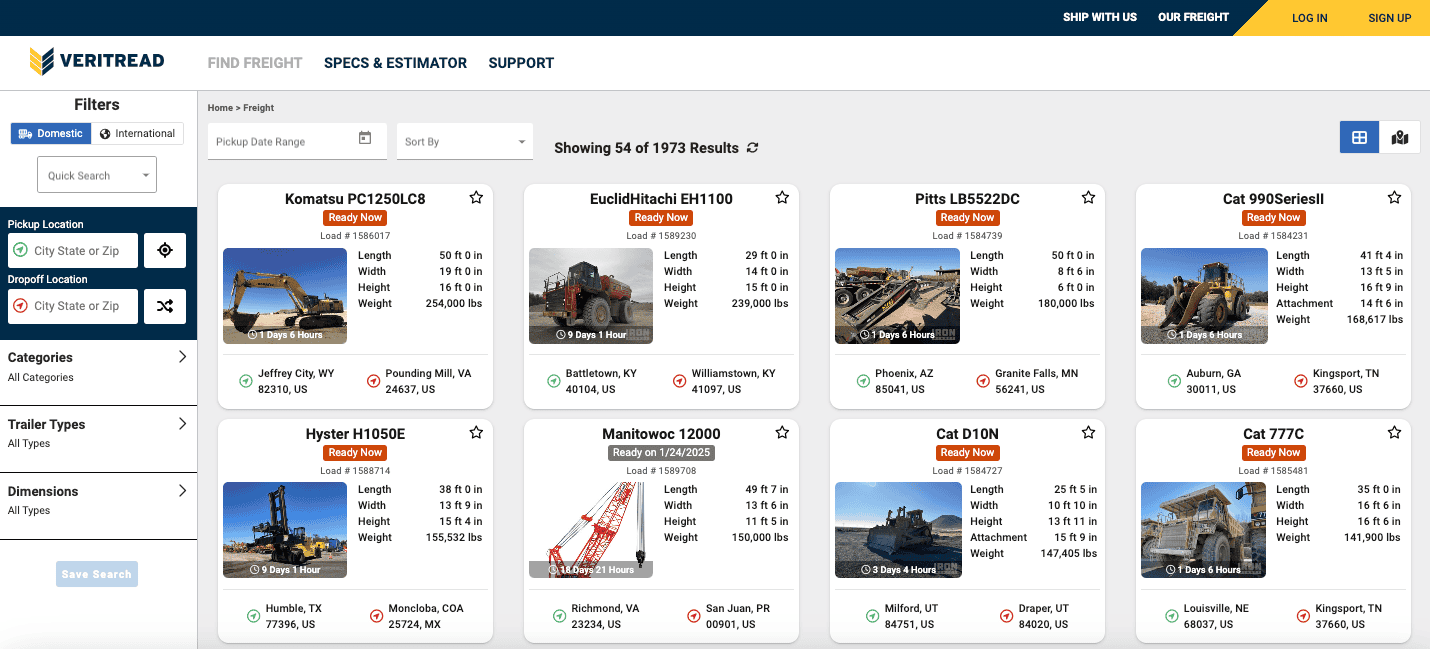What Is A Forklift?

What is a Forklift?
When asking “What is a Forklift” it’s also important to know where the forklift came from and what it is used for today.
Forklift are small industrial vehicles, that are power operated and have a forked platform attached at the front that can be raised and lowered for insertion under a cargo to lift or move it. Forklifts serve the needs of various industries including warehouses and other large storage facilities.
The forklift dates back to 1887. The very first version of the forklift was known as a lift truck. The pallet – or a skid as it’s sometimes called – is tied to the industrialization of the United States and was used to stack and move goods and materials.
The very first forklift was created to move these pallets to help keep up with the demand of the industrial era. The first lift truck could only lift a pallet off the ground by a few inches. In the first decade of the 1900s, the Pennsylvania Railroad invented a platform truck to help move luggage on and off of their trains. The use and demand of the forklift skyrocketed in 1914 when the First World War began when the need to transport weapons, food and clothes in a timely manner became a necessity.
In construction, industrial forklifts are used to move material across sites and distances. On construction sites, bricks and wood as well as tile and other interior construction materials are often delivered on pallets.
The reason forklifts are so helpful for warehouses is that they allow the storage of bulk products, still packaged for shipping. For this reason, the forklift is actually twice as relevant in the construction industry. They are used to move and load materials to get them ready to move to a construction site. Although they may not be seen as much on actual sites, they are still very valuable to the industry to keep up efficiency and productivity.
What Are The Different Types Of A Forklift?
Forklifts are legally not considered a vehicle, but can be carried by another road vehicle or water transports (such as cargo ships). They come in all shapes and sizes for various tasks, some of the common ones include:
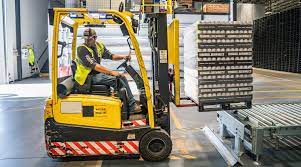 Counterbalance Forklift
Counterbalance Forklift
This is more like a regular standard type of forklift, which has a unique design that helps it balance the weight of the load with its weight, and it can be operated easily with the help of the three wheels that ease turning.
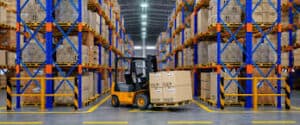
Warehouse Forklift
This is the most popular type of forklift, which can be found almost in every warehouse. It is a small type of forklift built to perform well when it comes to loading and unloading deliveries.
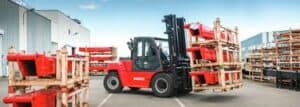
Industrial Forklift
They are huge and used to handle loads on an industrial scale, making them the strongest forklift as they can carry more weight than any other forklift.
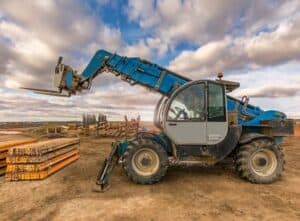
Rough Terrain Forklift
As the name implies, they are equipped with strong traction tires (like that of a tractor), which give them strong grips and downforce to work adequately in a rough terrain.
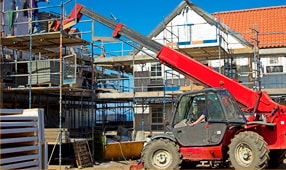
Telescopic Forklift
They are often called telehandlers or teletrucks, and they have a joint design of a crane and an average forklift which gives it a strongly elongated arm making it possible to reach higher than any forklift.
What Are The Parts Of A Forklift?

The average forklift weighs 9,000 pounds, about three times the average automobile. Construction forklifts can weigh nearly 100,000 pounds. Even a large industrial forklift, like a Toyota, comes in at 80,000 pounds or more.
Load Back-Rest
Load Back Rests play an important role in keeping your drivers safe. They prevent your forklift’s load from falling toward the driver. It features a steel grid above the forks and attaches to the sides of the forklift carriage with heavy-duty, steel framing.
Overhead Guard
The Overhead Guard is a safety feature designed to protect the operator from falling objects while within the confines of the operator compartment.
Carriage
The Carriage serves as the base to the forklift. The Carriage is fixed on mast rails so that it can be easily moved upward and downward.
Mast
The Mast is a vertical part that lifts up and pushes down the loads. The Mast component consists of interlocking rails that offer horizontal control.
Counterweight
The Counterweight is a cast iron weight attached to the rear part of the forklift. The aim of the counterweight is to counterbalance the load that is being lifted.
Power Source
The forklift’s power source consists of an internal combustion engine. The engine can be fueled by LPG, CNG, diesel and natural gas.
Truck Frame
The Truck Frame is the most vital component which forms the base of the machine. All of the key components of the forklift including wheels, counterweight and mast are attached to the truck frame.
Forklift Wheels and Tires
Forklifts have two types of wheels: Drive wheels and steer wheels. Drive wheels are located on the front axle of the forklift and are what the engine or electric motor supplies power to in order to move the lift truck. These wheels do not steer left and right, they support most of the load from the mast in a fixed position. Steel Wheels are located on the rear axle of the forklift. They allow the lift truck to turn, and also act as support for the counterweight.
Why choose VeriTread?
VeriTread is your go to solution for Hauling a Forklift. We can have your forklift delivered to any destination in North America in a safe and timely manner. We are experts at handling paperwork, selecting the right trailers and drivers, and charting the most efficient routes.
VeriTread makes it easy to get reliable freight quotes from the experts in equipment transport. VeriTread moves thousands of machines every year and can quickly generate a reliable quote on the go. Our extensive specs and dimensions database of 60,000+ items, ensures you spend less time researching and more time putting your equipment to work. The VeriTread freight quote process is the simplest way to prepare for transport of your machines. Follow these easy steps and you will receive a quote in under one minute:
- Enter a Manufacturer & Model
- Verify or Edit Your Machine Dimensions
- Enter Pickup & Drop Off Locations
- Your Quote is Ready!
We believe our suite of innovative decision tools empower our customer to make smarter and more informed transportation decisions, reducing overall uncertainty, and delivering a better experience for all.
Getting started with VeriTread is easy. You can visit our contact form or call (800) 880-0468 or (863) 226-0903 for international calls.
veritread products
Top Articles
Freight Types
recent posts

Basic Tips of Heavy Equipment Transport

Understanding Equipment Transport Services
